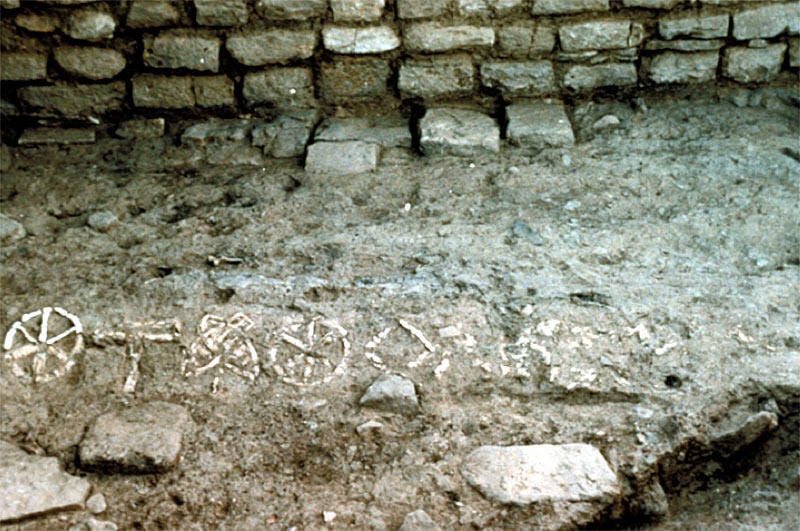In western India, in the Kutch district of the state of Gujarat, is an Indus Valley Civilisation archaeological site known as Dholavira.
We do not know if this was what it was called at the time, because, as I stated in the Ancient Civilisations: The Indus Valley, the language of this civilisation is not known. But this place is called Dholavira to-day and by the evidence found, it was declared to be one of the oldest sites of the Indus Valley Civilisation, most likely the Early Harappan Phase (approximately between 3200 BCE and 2600 BCE).
Dholavira is considered to be an important site of the civilisation because of this very theory.
Now, this article is about the one archaeological find that the site of Dholavira is known for: a signboard.
[caption id="attachment_1149" align="aligncenter" width="800"]
The signboard at Dholavira[/caption]
You might wonder what is so special about a signboard. That is true: a signboard is a board with signs. Say, beside a road annoucing a hump or a bridge. So, what was special about the signboard at Dholavira?
It consists of a string of characters that make no apparent sense to us in the modern times. It is the Harappan script that has not yet been deciphered.
Can you make any sense of this? I know I can't.
Where is the signboard found?
What does it contain?
Having been discovered by the Archaeological Survey of India team led by Dr B S Bisht, the famous signboard of Dholavira is proof of the amount of socio-cultural advancement that the people of the Indus Valley knew. It is essentially ten large symbols on a wooden board - possibly the first in the world - each of them being 37cm high. These symbols were said to be crafted in white gypsum. This signboard is significant to historians, because they feel it shows how important education was to people of the Indus Valley Civilisation. That and public messaging.
It is beyond doubt one of the most important discoveries, not only in Dholavira, but in the entire Indus Valley Civilisation. The Dholavira Signboard was found just outside the northern entrance of the citadel, thus earning its nickname by the experts. So far, it is considered to be one of the longest inscriptions of the civilisation. It measured to be about 3m long. Dr Bisht suggested that it was possibly used during the Classic Age of the Indus Valley Civilisation.
Indology expert Rekha Rao suggests that each of the symbols on this sign board indicate specific information about a yagna and that perhaps their order is irrelevant. However, as you may have already guessed, it has not been proven or disproven, so the signboard still remains a mystery.
References:




